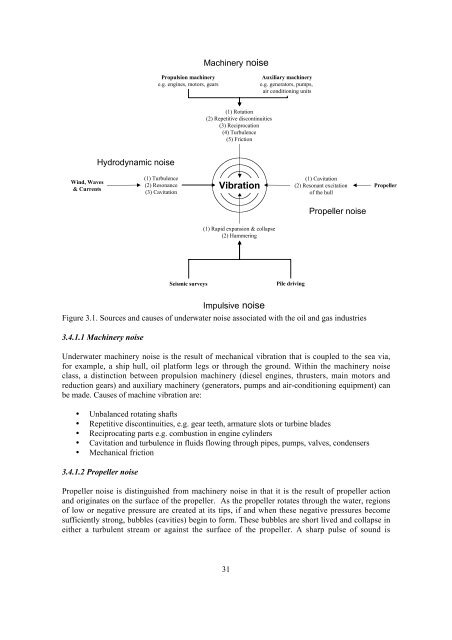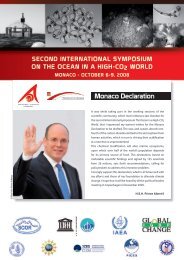Oceans of noise - Whale and Dolphin Conservation Society
Oceans of noise - Whale and Dolphin Conservation Society
Oceans of noise - Whale and Dolphin Conservation Society
- No tags were found...
You also want an ePaper? Increase the reach of your titles
YUMPU automatically turns print PDFs into web optimized ePapers that Google loves.
Machinery <strong>noise</strong>Propulsion machinerye.g. engines, motors, gearsAuxiliary machinerye.g. generators, pumps,air conditioning units(1) Rotation(2) Repetitive discontinuities(3) Reciprocation(4) Turbulence(5) FrictionHydrodynamic <strong>noise</strong>Wind, Waves& Currents(1) Turbulence(2) Resonance(3) CavitationVibration(1) Cavitation(2) Resonant excitation<strong>of</strong> the hullPropellerPropeller <strong>noise</strong>(1) Rapid expansion & collapse(2) HammeringSeismic surveysPile drivingImpulsive <strong>noise</strong>Figure 3.1. Sources <strong>and</strong> causes <strong>of</strong> underwater <strong>noise</strong> associated with the oil <strong>and</strong> gas industries3.4.1.1 Machinery <strong>noise</strong>Underwater machinery <strong>noise</strong> is the result <strong>of</strong> mechanical vibration that is coupled to the sea via,for example, a ship hull, oil platform legs or through the ground. Within the machinery <strong>noise</strong>class, a distinction between propulsion machinery (diesel engines, thrusters, main motors <strong>and</strong>reduction gears) <strong>and</strong> auxiliary machinery (generators, pumps <strong>and</strong> air-conditioning equipment) canbe made. Causes <strong>of</strong> machine vibration are:• Unbalanced rotating shafts• Repetitive discontinuities, e.g. gear teeth, armature slots or turbine blades• Reciprocating parts e.g. combustion in engine cylinders• Cavitation <strong>and</strong> turbulence in fluids flowing through pipes, pumps, valves, condensers• Mechanical friction3.4.1.2 Propeller <strong>noise</strong>Propeller <strong>noise</strong> is distinguished from machinery <strong>noise</strong> in that it is the result <strong>of</strong> propeller action<strong>and</strong> originates on the surface <strong>of</strong> the propeller. As the propeller rotates through the water, regions<strong>of</strong> low or negative pressure are created at its tips, if <strong>and</strong> when these negative pressures becomesufficiently strong, bubbles (cavities) begin to form. These bubbles are short lived <strong>and</strong> collapse ineither a turbulent stream or against the surface <strong>of</strong> the propeller. A sharp pulse <strong>of</strong> sound is31




